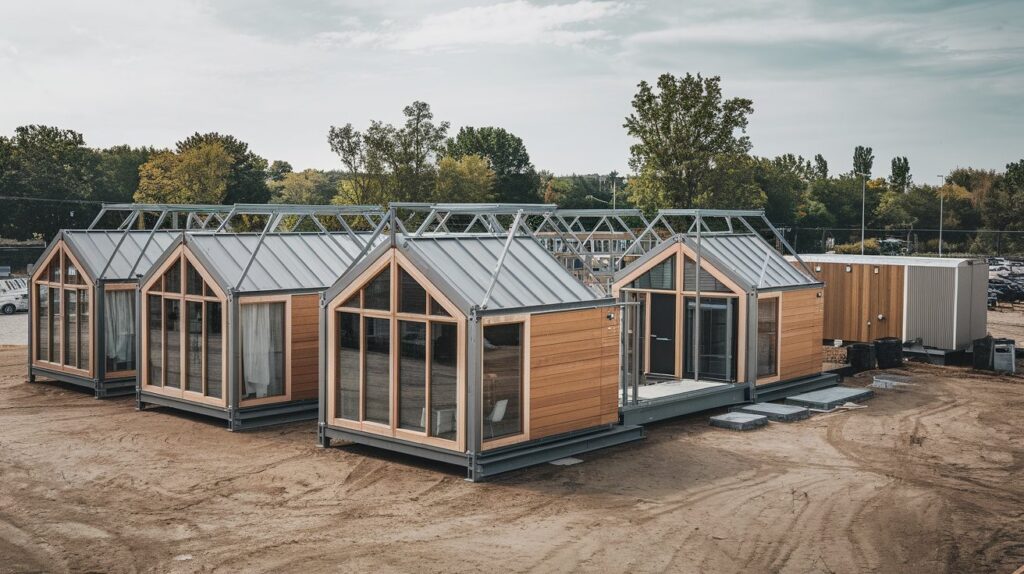
Assembly processes in modular construction: A Comprehensive Guide
The world of construction is witnessing a significant transformation with the rise of modular construction. At the heart of this innovative approach are the assembly processes that make it possible. These processes are not only reshaping how buildings are erected but also how we think about design and efficiency. For home enthusiasts, understanding these processes can open up new possibilities and inspire creative solutions.
In this article, we will explore the intricacies of assembly processes in modular construction, shedding light on why this method is gaining popularity and how it benefits both builders and residents. Whether you’re considering a modular home for its speed of construction or its sustainable attributes, understanding the assembly process is key to appreciating the full potential of this building approach.

The Rise of Modular Construction
Modular construction has been steadily gaining traction due to its efficiency and sustainability. Unlike traditional building methods, modular construction involves prefabricating sections of a building in a factory setting. These sections, or modules, are then transported to the construction site for assembly. This approach offers numerous advantages, including reduced construction time, minimized waste, and enhanced quality control.
Why Modular?
One of the primary reasons for the growing interest in modular construction is its ability to significantly reduce construction time. By manufacturing modules in a controlled environment, builders can avoid delays caused by weather and other external factors. This means that projects can be completed more quickly, allowing homeowners to move in sooner.
Furthermore, the sustainability benefits of modular construction are substantial. Since modules are produced in a factory, there is less material waste, and the controlled environment allows for better resource management. This aligns with the growing demand for eco-friendly building practices.
Key Assembly Processes in Modular Construction
1. Design and Planning
The first step in the assembly process is meticulous design and planning. Architects and engineers work together to create detailed plans that specify the dimensions and features of each module. This stage is crucial as it lays the foundation for the entire construction process.
2. Module Fabrication
Once the design is finalized, the modules are fabricated in a factory setting. This involves constructing the structural framework, installing electrical and plumbing systems, and finishing the interior and exterior surfaces. The factory environment ensures precision and quality control, resulting in high-quality modules that are ready for assembly.
3. Transportation to the Site
After fabrication, the modules are transported to the construction site. This step requires careful planning and coordination to ensure that the modules arrive on time and in perfect condition. Specialized transport vehicles are used to handle the modules, and logistics teams work diligently to streamline this process.
4. On-Site Assembly
The final and most critical step in the assembly process is the on-site assembly of modules. Using cranes and other heavy machinery, the modules are carefully lifted and positioned according to the design specifications. This process requires skilled workers who can ensure that each module is aligned correctly and securely fastened.
Challenges and Solutions in Modular Assembly
Overcoming Logistical Hurdles
One of the challenges in modular construction is managing the logistics of transporting large modules to the site. Narrow roads, weight restrictions, and other logistical hurdles can pose challenges. However, with strategic planning and the use of advanced transport technologies, these challenges can be overcome.
Ensuring Structural Integrity
Another critical aspect of assembly processes in modular construction is ensuring the structural integrity of the final building. Engineers must ensure that the modules fit together seamlessly and that all connections are secure. Using advanced engineering techniques and materials can help achieve this goal.
Benefits of Modular Construction for Homeowners
Speed and Efficiency
For home enthusiasts, one of the most appealing aspects of modular construction is its speed. Projects that might take months or even years with traditional construction methods can be completed in a fraction of the time with modular techniques. This efficiency not only saves time but also reduces the overall cost of construction.
Quality and Precision
Modular construction offers a high level of quality and precision. Since modules are built in a controlled factory environment, there is less room for errors. This results in a finished product that meets high standards of quality and durability.
How Modular Construction is Changing the Industry
Innovations in Design
The assembly processes involved in modular construction are paving the way for new innovations in design. Architects and designers are exploring new possibilities that were not feasible with traditional construction methods. This is leading to the creation of unique and innovative architectural designs that are both functional and aesthetically pleasing.
Economic Impact
Modular construction is also having a significant economic impact. By reducing construction time and costs, more people can afford to build their dream homes. This is particularly beneficial in areas with housing shortages, where modular construction can help meet demand more efficiently.
Conclusion
In conclusion, the assembly processes in modular construction are revolutionizing the way we build. With their numerous benefits, including speed, efficiency, and sustainability, these processes are set to play a crucial role in the future of construction. For those interested in exploring more about modular homes, the website Cultural Perceptions of Modular Homes offers valuable insights.

FAQs
What are the main advantages of modular construction?
Modular construction offers several advantages, including reduced construction time, lower costs, improved quality control, and sustainability.
How does the assembly process differ from traditional construction?
In traditional construction, buildings are constructed entirely on-site, whereas modular construction involves fabricating sections in a factory and assembling them on-site.
Is modular construction suitable for all types of buildings?
While modular construction is highly versatile, it is particularly well-suited for residential buildings, schools, and healthcare facilities due to its speed and flexibility.
This article contains affiliate links. We may earn a commission at no extra cost to you.